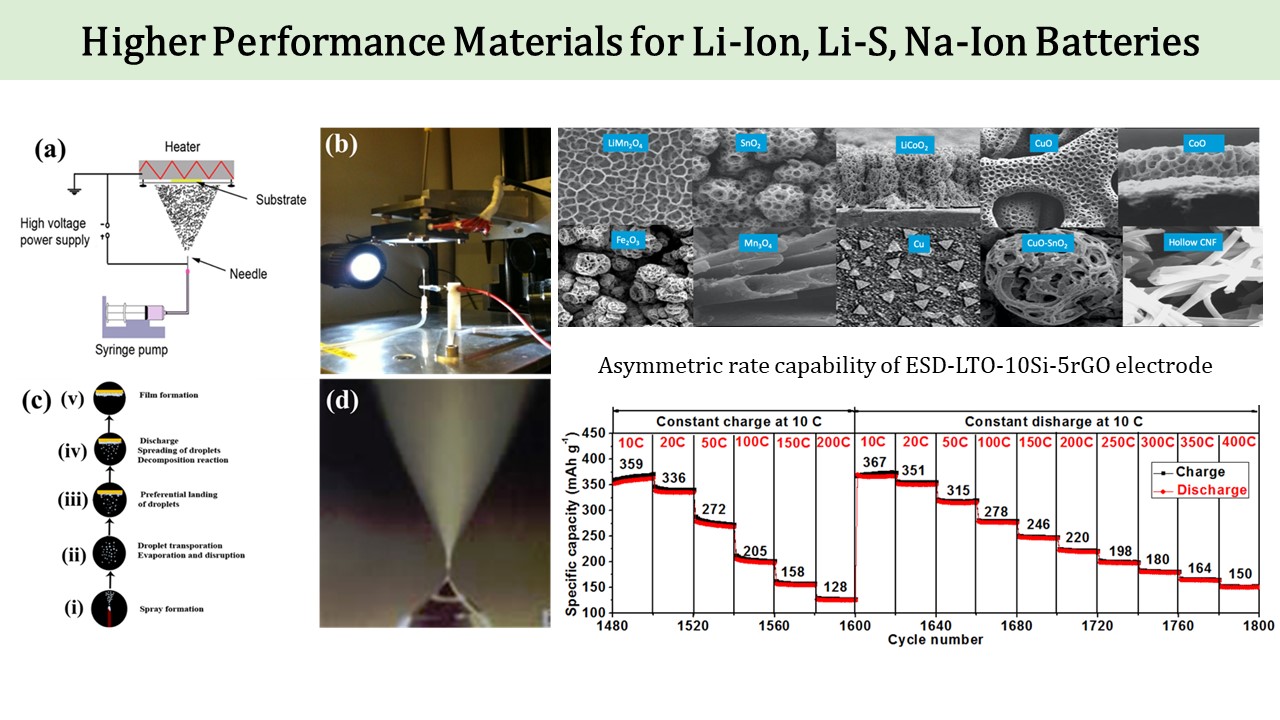In our recent research, we optimized the bipolar electrochemical exfoliation method for 2D materials and performed double-click electrochemical exfoliation on graphene and black phosphorus. In one exemplary application, graphene electrodes based on BPE demonstrated enhanced areal capacitance and outstanding frequency behavior as supercapacitor electrodes. In another exemplary application, BPE-enabled reduced graphene oxide microelectrodes exhibited high sensitivity and low detection limit as aptasensors. Furthermore, mechanistic studies, including the effect of temperature, were conducted to further tune the functionality and enhance the exfoliation rate of the 2D materials.

In our research, we utilized electrostatic spray deposition technology to systematically investigate the confinement effects of tin dioxide (SnO2) nanoparticles within carbon nanotubes (CNTs) and the impact of red phosphorus-sulfurized polyacrylonitrile (RP-SPAN) composite material on the performance of lithium-ion battery anodes. By precisely controlling the size and distribution of SnO2 nanoparticles, we achieved their uniform confinement within CNTs. This structure not only effectively buffered the volume expansion of SnO2 during lithium storage but also significantly improved the electronic conductivity of the overall composite material through the conductive network provided by CNTs. Furthermore, the study of RP-SPAN composite materials revealed the potential for improving the electrochemical performance of red phosphorus through a chemical bonding strategy, where sulfurization not only enhanced the material's conductivity but also alleviated the volume expansion issue during cycling through chemical interactions. These research outcomes, grounded in solid-state electrochemistry theory and nanomaterial science principles, provide new theoretical and practical insights for the design and optimization of high-performance anode materials for lithium-ion batteries. Our work highlights the significant impact of material microstructure on its macroscopic electrochemical performance, opening new avenues for further enhancing the performance of lithium-ion batteries.

Our group explores the use of stereolithography (SLA) for the additive manufacturing of both cerium-doped and undoped borosilicate glass. Through a multi-step post-thermal processing, the study successfully optimized the structural stability and optical properties of the manufactured glass. The results demonstrate that this technique can produce glass with excellent optical characteristics, making it suitable for advanced optical and luminescent applications. The study highlights the potential of SLA in achieving rapid, digital, and on-demand manufacturing for these glass materials.






